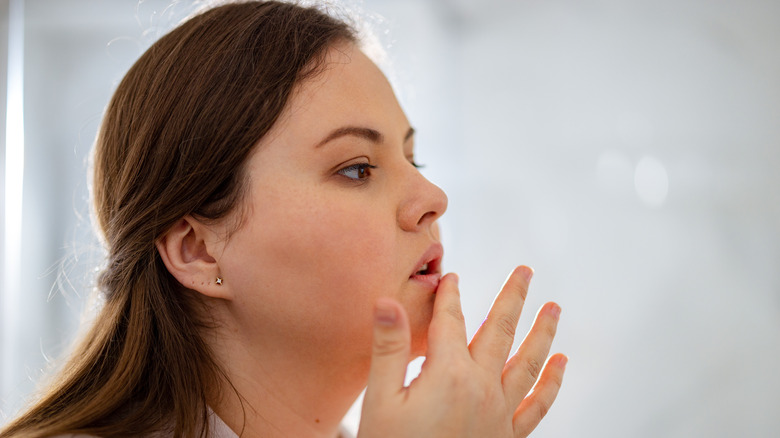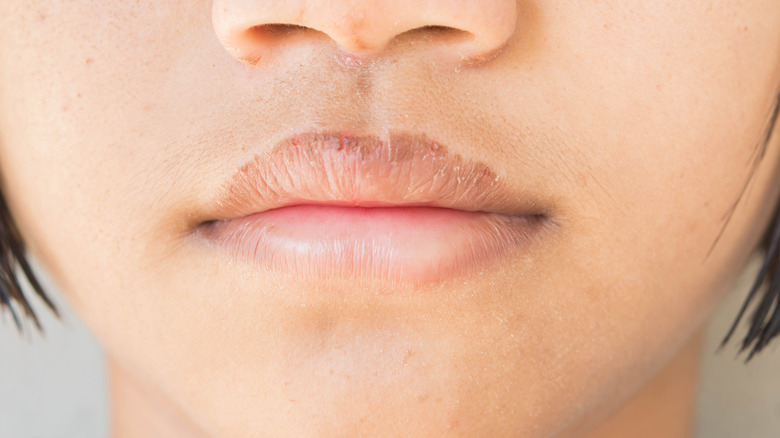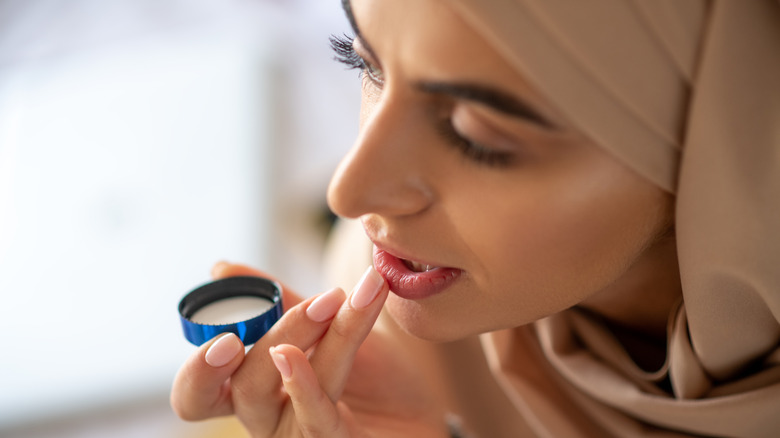What Causes Lip Discoloration & How Can You Treat It?
The skin undergoes many changes in appearance throughout one's life, and the skin on the lips proves no exception. Pale, gray, or otherwise discolored lips that appear out of the blue are rarely a cause for concern. However, according to Healthline, lip discoloration may develop as a side-effect of health-related issues, including medical conditions, vitamin deficiencies, and certain medications. For instance, pale lips can manifest as a sign of anemia, which occurs when the body produces fewer red blood cells.
That said, individuals with darker skin exhibit natural variations in the color of their skin and lips as their bodies produce more melanin, the substance responsible for pigmented hair and skin, per the Cleveland Clinic. Those with darker skin tones may notice their skin or lips darken over time due to an excess of melanin, also known as hyperpigmentation. Although changes in lip color are understandably distressing, rest assured that this is common. More often than not, discolored lips indicate dryness and irritation rather than a serious health issue. Regardless, there are ways to prevent and treat discoloration by addressing the root cause and seeking the correct treatment.
Identifying the causes of lip discoloration
In many cases, discolored or lackluster lips are caused by dryness. For example, constant lip-licking, smoking, cold weather, or drying lip products (think matte lipstick) contribute to dryness (via Healthline). "Persistent dryness or chapped lips can be irritating and can cause release of more melanin and further worsen the pigment," board-certified internist Dr. Sunitha Posina, M.D. explained to The Zoe Report. And when your lips become dry and chapped, you are more likely to lick them or pick at peeling skin. However, this merely exacerbates the problem.
Additionally, your lips comprise only three to four layers of skin – less than half the number of layers that make up the skin on the rest of your body (per Healthline). This makes them more susceptible to drying out and leaves them more vulnerable to aging, sun damage, or trauma. "Sun damage and aging can lead to paler lips due to dryness, poor circulation, as well as fine lines and wrinkles due to loss of underlying collagen and elastin," academic dermatologist Dr. Susan Cox, M.D., told The Zoe Report. Sometimes, hyperpigmentation also arises from allergic reactions. Products such as lip balms, lipsticks, and even toothpaste can contain harsh ingredients that can irritate the delicate skin of your lips, according to Medical News Today.
Remedies for discolored lips
The best way to restore your lips to their natural color is to avoid products containing harsh ingredients or allergens while preventing the lips from drying out. Board-certified dermatologist Dr. Andrea Suarez (Dr Dray) explains in a YouTube video that lip scrubs and certain ingredients in lip balms aggravate the lips, which increases the risk of discoloration. Watch out for ingredients such as beeswax, camphor, lanolin, essential oils, and flavorings (spearmint, vanilla, mint, etc.). Remove all problem ingredients from your daily routine and opt for gentle lip products until your symptoms improve.
Dr. Suarez also recommends addressing habitual lip-licking or chewing, as your saliva contains compounds that irritate the skin. To prevent dryness, she suggests keeping a lip balm on hand to lock in moisture throughout the day, preferably one that contains petrolatum or hyaluronic acid. Lastly, protect your skin from sun damage by using a lip balm with SPF before leaving the house, preventing further hyperpigmentation from sunspots. If the discoloration persists or is accompanied by other symptoms, consult a health professional to discuss other treatment options.


